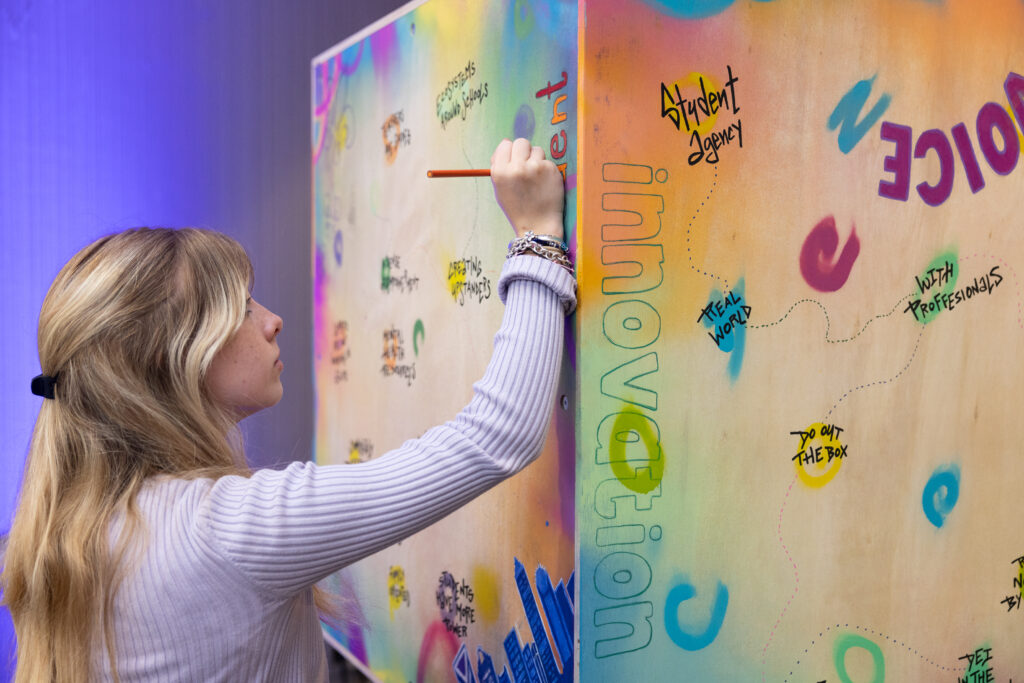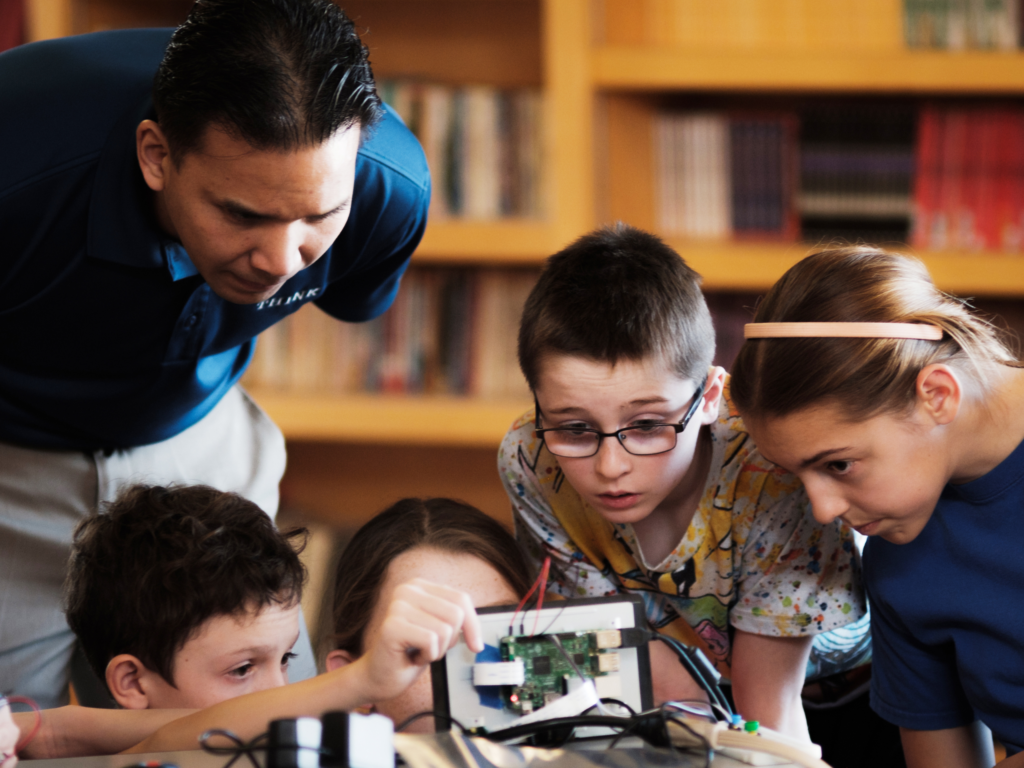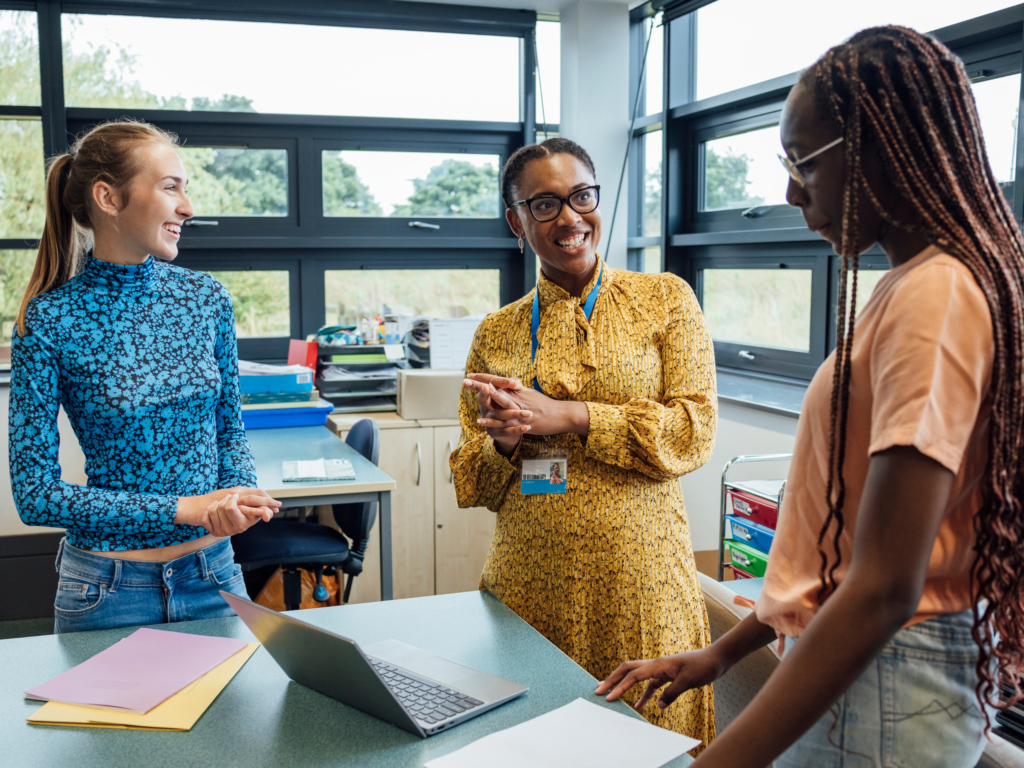This blog was also cross-posted on Medium.

Earlier this month, I moderated a panel at LearnLaunch’s Across Boundaries conference with an inspiring group of educators. We were discussing one of my favorite topics: integrating social emotional learning (SEL) into classroom instruction. This is an emerging area of study and many of us are learning while implementing, so I was encouraged to hear that seasoned educators like Sheldon Berman, Owen Stearns and Nat Vaughn are fully embracing this, and using practices that align with some of the most promising early trends we’re seeing in our research at NewSchools.
At NewSchools, we invest in teams of educators working to design innovative schools that embrace an expanded definition of student success — which we define as strong academics coupled with important mindsets, skills and habits. As an early stage investor, we are curious about promising innovations like adding SEL to classroom instruction, and we are also looking for early signals of impact and effectiveness.
When we set out to measure impact in some of the schools where we’ve made investments, there were many SEL frameworks from which to choose, and dozens of SEL competencies that could potentially be tracked in a school setting. With our partner, Transforming Education, we worked with schools in our portfolio to identify the competencies they were working toward. Together we selected seven — curiosity, perseverance, growth mindset, self-awareness, self-regulation, social awareness, and self-efficacy — which are supported by research and have existing measures. We then worked with our partner to assemble an instrument using the best available measures for those competencies.
Emerging data from our schools that have been doing this work for the past two years is promising, and we will have findings to share later in 2018. But in the meantime, I’m excited about some synergies between what we’re finding and what the educators on my panel have learned from their own experiences:
- Put as much emphasis on SEL as on core academic subjects. At Andover Public Schools, Superintendent Sheldon Berman focuses on the integration of Personalized Learning, Universal Design Principles and SEL to create an embedded academic and SEL experience for all students. He emphasized the importance of spending as much time on planning and curriculum for SEL as you do on core academic subjects, noting that SEL embedded into academics is ideal.
- The impact of SEL integration on student achievement is significant and swift. Excel Academy Charter CEO Owen Stearns is one year into his SEL journey following a call to action to address areas where school graduates were lacking the critical skills they needed to succeed beyond their K-12 experience. He discussed how, after just one year, their schools’ use of Valor’s SEL curriculum and Compass model has dramatically improved the tone and closeness of their school community. Stearns gave anecdotal examples of student achievement that he believes would not have been possible without the peer-to-peer relationships created due to their SEL shift.
- Teachers are essential partners. Blake Middle School Principal Nat Vaughn emphasized the importance of purposefully engaging teachers in the SEL journey. He mentioned that many educators choose teaching because they want to positively impact students’ lives, and fostering better teacher-student relationships through SEL curriculum and practices is key to a positive school culture and climate.
Adding to these anecdotal findings by practitioners in their respective schools, the short and long-term benefits of SEL are well-documented, with studies showing student gains in academic performance and higher graduation rates. Students who have self-control and a sense of peer acceptance show increased achievement in math. Students who experience a caring relationship with a teacher are more motivated to learn. Even teachers who develop their social emotional skills reap rewards through increased mental health and more effective teaching. And if this data isn’t enough to convince you, there’s also a cost benefit analysis study of six SEL intervention programs showing $11 gained for every $1 spent on SEL.
Now that the case for SEL has been made and there is consensus that we should focus on it, the next step is to keep sharing what we’re doing and learning. There is a great deal to learn from our work thus far, and of course there’s still much more for everyone to figure out. Stay tuned for more from NewSchools in the months ahead, and we’re excited to hear what other educators and funders are finding in their own work. If we as a sector are able to center our practice and research, and coalesce around a few SEL competencies that show the greatest potential, we can concentrate our efforts and innovate on more of what delivers the best outcomes for students.


